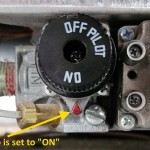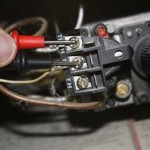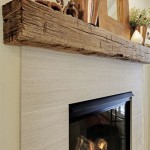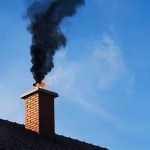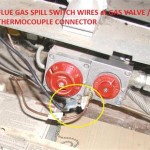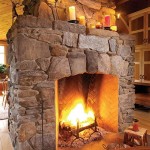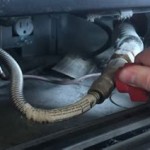Fake Firewood For Gas Fireplace: A Comprehensive Guide
Gas fireplaces offer a convenient and efficient alternative to traditional wood-burning fireplaces. They provide warmth and ambiance without the associated mess, labor, and environmental concerns. A key element in replicating the aesthetic appeal of a real wood fire within a gas fireplace is the use of fake firewood, also known as ceramic logs or gas logs. These artificial logs are meticulously crafted to mimic the appearance of natural wood, adding to the overall visual experience of a gas fireplace.
The selection of the appropriate fake firewood for a gas fireplace involves considering various factors, including material, size, venting requirements, and aesthetic preferences. Understanding these aspects is crucial for achieving optimal performance, safety, and visual appeal. This article will explore the various aspects of fake firewood for gas fireplaces, providing a comprehensive guide for homeowners.
Types of Materials Used in Fake Firewood
Fake firewood is typically manufactured from ceramic, refractory cement, or a combination of both. Each material offers distinct advantages and disadvantages in terms of durability, heat resistance, and aesthetic realism.
Ceramic Logs: Ceramic logs are predominantly composed of a lightweight, porous ceramic material. They are known for their exceptional ability to withstand high temperatures without warping or cracking. This makes them a suitable choice for gas fireplaces that generate significant heat. Ceramic logs also tend to retain their color and shape over extended periods, contributing to their longevity. Furthermore, the porous nature of ceramic allows for realistic charring and ember effects, enhancing the visual authenticity of the fire.
However, ceramic logs can be more fragile than other types of artificial logs. They are susceptible to chipping or breaking if mishandled during installation or cleaning. Therefore, careful handling is essential to maintain their integrity.
Refractory Cement Logs: Refractory cement logs are constructed from a dense, heat-resistant cement mixture. They are generally more durable and heavier than ceramic logs, making them less prone to damage. This increased durability contributes to their extended lifespan. Refractory cement logs also offer excellent heat retention properties, allowing them to radiate heat even after the gas is turned off, providing sustained warmth.
However, refractory cement logs may not exhibit the same level of realistic detail as ceramic logs. Their surface texture can sometimes appear more uniform, lacking the intricate grain patterns and knots found in natural wood. Additionally, the color of refractory cement logs may fade over time with prolonged exposure to high heat.
Combination Logs: Some manufacturers produce fake firewood that combines both ceramic and refractory cement. This approach aims to leverage the strengths of both materials, resulting in logs that offer a balance of durability, heat resistance, and aesthetic realism. Typically, the core of the log is constructed from refractory cement for strength and heat retention, while the outer layer is made of ceramic to enhance the visual appearance. Combination logs represent a compromise between the properties of the individual materials.
Sizing and Placement Considerations
Selecting the appropriate size and configuring the proper placement of fake firewood within a gas fireplace are vital for optimal performance and safety. Overcrowding the fireplace or obstructing the burner can negatively impact the flame pattern, heat output, and potentially create hazardous conditions.
Sizing: The size of the fake firewood set should be proportional to the dimensions of the firebox. The logs should not extend beyond the designated firebox area or come into direct contact with the fireplace glass. Overly large logs can impede airflow and prevent proper combustion, resulting in inefficient heating and potential carbon monoxide buildup. Conversely, logs that are too small may not provide adequate coverage, diminishing the aesthetic appeal of the fire. Manufacturers typically provide guidelines on the appropriate log size for specific fireplace models. Adhering to these recommendations is crucial for safety and performance.
Placement: The placement of fake firewood within the firebox significantly affects the flame pattern, heat distribution, and overall appearance of the fire. Most gas fireplaces are designed with a specific log placement configuration to optimize airflow and combustion. The manufacturer's instructions should be carefully followed when arranging the logs. Generally, logs should be positioned to allow for unobstructed airflow around the burner. Logs should not be stacked too closely together or directly on top of the burner ports. Proper spacing is essential to ensure a realistic and visually appealing flame pattern.
Furthermore, the placement of logs can influence the radiating heat. Positioning logs slightly forward can help direct more heat into the room. Experimentation with different log arrangements, within the manufacturer's guidelines, can help fine-tune the heat output and visual appeal of the fireplace.
Venting Requirements: Different types of gas fireplaces have distinct venting requirements, which must be considered when selecting and arranging fake firewood. Vented gas fireplaces require a chimney or vent to exhaust combustion gases, while ventless gas fireplaces burn cleaner and do not require venting. The type of venting system influences the type and placement of fake firewood that can be used.
For vented gas fireplaces, proper airflow is essential to ensure efficient combustion and prevent the buildup of dangerous gases. The fake firewood arrangement should not obstruct the flue or vent opening. Overcrowding the fireplace with logs can restrict airflow and compromise the venting system's effectiveness. Ventless gas fireplaces, while not requiring a chimney, still require adequate ventilation within the room to prevent the buildup of carbon monoxide. The fake firewood arrangement should allow for sufficient air circulation to ensure safe operation.
Aesthetic Considerations and Realism
Beyond functionality and safety, the aesthetic appeal of fake firewood is a significant consideration for homeowners. The goal is to create a realistic and visually pleasing fire that enhances the ambiance of the room. Manufacturers employ various techniques to achieve realism in their fake firewood designs, including detailed molding, hand-painting, and ember effects.
Detailed Molding and Texture: High-quality fake firewood features intricate molding and texture to replicate the appearance of natural wood. Realistic grain patterns, knots, bark details, and split ends contribute to the overall authenticity. Advanced molding techniques allow manufacturers to capture the subtle nuances of different wood species, such as oak, birch, and maple. The texture of the logs should also mimic the feel of real wood, adding to the tactile realism.
Hand-Painting and Coloring: Hand-painting is often used to enhance the visual realism of fake firewood. Skilled artisans apply multiple layers of paint to create realistic color variations, shadows, and highlights. Charred areas, burn marks, and ash deposits are meticulously painted to simulate the effects of a real fire. The color palette should closely resemble the natural colors of wood, ranging from light browns and tans to dark grays and blacks.
Ember Effects: Many fake firewood sets incorporate ember effects to enhance the visual appeal of the fire. These effects can be achieved through various means, such as glowing embers, flickering lights, or simulated embers that appear to burn and glow. Ember beds, typically located beneath the logs, create a realistic base for the fire. The ember effects should be subtle and realistic, mimicking the natural glow and flicker of embers in a wood-burning fire.
Log Style & Arrangement: The stylistic arrangement of the logs also contributes to the overall realism. Some sets are designed to mimic a traditional log cabin stack, while others are arranged in a more random or natural pattern. Different log shapes and sizes can add visual interest and depth to the fire. Consider the overall style of the room and choose a log set that complements the décor. A rustic cabin might suit a more natural, unkempt log arrangement, while a modern home might favor a more stylized and minimalist design.
Ultimately, the selection of fake firewood is a matter of personal preference. Homeowners should consider their individual aesthetic preferences, the style of their home, and the desired ambiance when choosing a log set. By carefully considering the material, size, placement, and aesthetic details, one can create a gas fireplace that provides both warmth and visual enjoyment.
Maintaining fake firewood is relatively simple. Periodically, dust and debris may accumulate on the logs. Gently brushing the logs with a soft brush is usually sufficient to remove surface dust. Avoid using harsh chemicals or abrasive cleaners, as these can damage the finish. Inspect the logs for any signs of cracking or damage. While durable, ceramic and refractory logs can sometimes crack, especially if subjected to excessive heat or physical impact. Replace damaged logs to maintain the safety and efficiency of the fireplace. Regular inspection and maintenance will help to prolong the life and appearance of the fake firewood, ensuring a beautiful and functional gas fireplace for years to come.
Choosing the correct fake firewood for a gas fireplace involves careful consideration of several factors. Understanding the different materials used, including their strengths and weaknesses, is critical for making an informed choice. Proper sizing and placement are essential for both safety and optimal performance. Aesthetic considerations, such as the level of realism and the overall style of the logs, play a significant role in achieving the desired ambiance.

All About Artificial Firelogs Raleigh Nc Mr Smokestack Chimney Service

Fake Logs For Gas Fireplace Natural

Fake Logs For Gas Fireplace Vented

Fake Burning Logs For Fireplace Electric

10pcs Ceramic Wood Gas Log Set Fireplace Imitation Propane Firepit Logs Com

Faux Log Stack

Massive Oak Vented Ceramic Gas Log Set 48 Woodland Direct

These Beautiful Fake Metal Logs Are A Perfect Addition To Your Existing Outdoor Fire Tables

Warming Trend Update Gas Logs To Improve Performance And Appearance Walton

Pin By Jennie Roe On Cabin In The Woods Fake Fireplace Logs Gas
Related Posts

